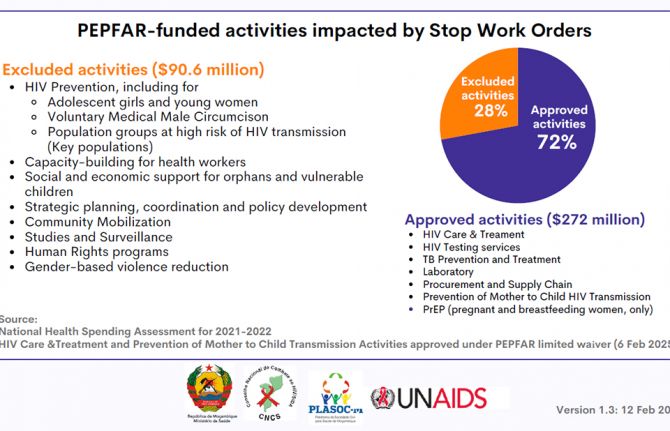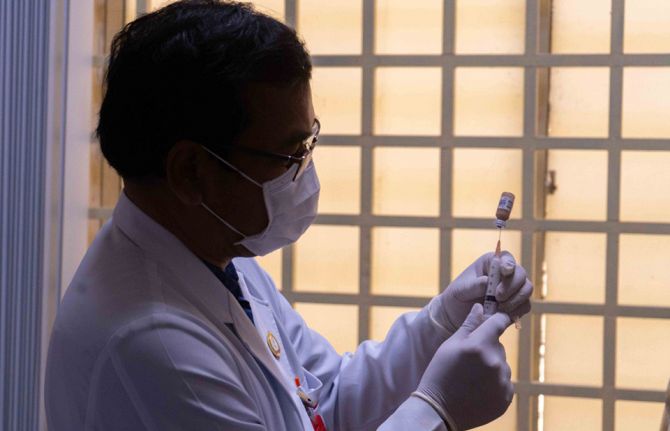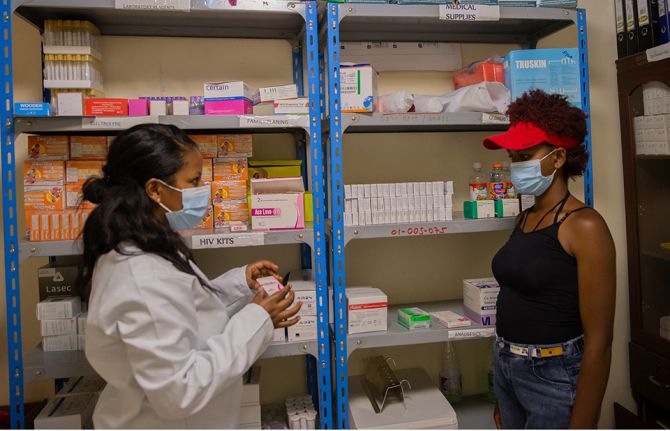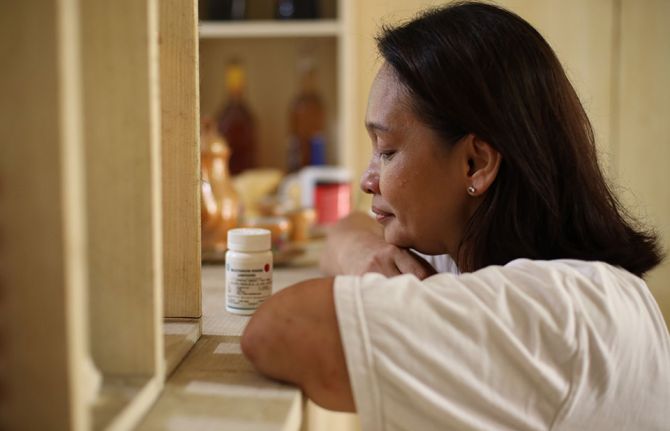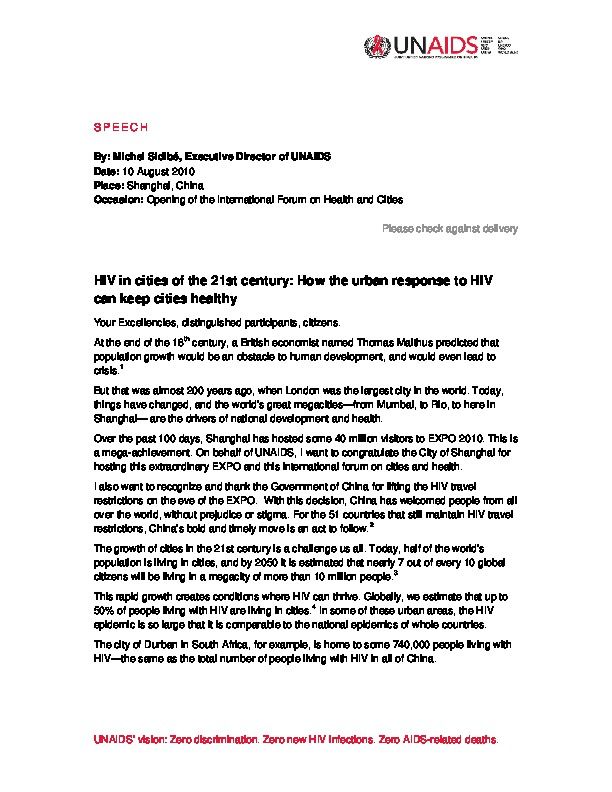
Feature Story
UNICEF: Children in cities facing neglect
05 March 2012
05 March 2012 05 March 2012
Many of the poorest children living in the world’s towns and cities are facing profound disparities in health, education and life chances.
Credit: UNICEF
Many of the hundreds of millions of young people living in towns and cities across the globe are facing poverty, social exclusion, health inequity and lack of access to vital services. This is the key finding in UNICEF’s latest flag ship report, The state of the world’s children 2012: Children in an urban world.
The report says that infrastructure and facilities are not keeping pace with urban growth and systems and services are not reaching the poorest children: cities are often the backdrop for some of the greatest disparities in children’s health, education and life chances.
According to UNICEF Executive Director Anthony Lake, “[Children] growing up in slums and shanty towns are among the most disadvantaged in the world, deprived of essential services that can mean the difference between life and death...between opportunity and despair.” This is clearly significant as latest available statistics suggest that nearly half the world’s children live in urban settings, with this proportion set to increase.
HIV services lacking
Children in an urban world cites lack of access to HIV services as a key area where children and young people are being failed. The virus places a heavy burden on the young with an estimated 2 500 people aged 15 to 24 infected every day and around 2 million 10 to 19 year olds living with HIV. Significantly, HIV prevalence is often higher in urban areas. For example, research has shown that girls in towns and cities in southern Africa are markedly more likely to be living with HIV than their rural counterparts.
To reinforce the finding that young people in urban settings can be highly vulnerable to HIV infection, the report also features a 2009 study carried out among adolescents living on the streets in four Ukrainian cities. It found that 15% injected drugs, 75% were sexually active (most before the age of 15) and nearly 60% of the girls had received payment for sex. Despite their greater vulnerability, it is noted that such adolescents were the most likely to be excluded from HIV-related services.
[Children] growing up in slums and shanty towns are among the most disadvantaged in the world, deprived of essential services that can mean the difference between life and death...between opportunity and despair
Anthony Lake, Executive Director, UNICEF
In addition, the report examines the role of sexual harassment and violence against girls and women in urban settings. Such violence can also heighten the risk of HIV infection as well as limiting rights to education, work, recreation and political expression.
Focus on successful initiatives
A large number of successful initiatives aimed at making cities better places for the most vulnerable children and adolescents are featured. For example, the UN-Women Global Programme on Safe Cities Free of Violence against Women and Girls is working with partners in five cities to help prevent and reduce gender-based violence in public spaces, emphasising good governance, political participation and urban planning.
Children in an urban world stresses the need to invest more in community-based action which allows young people to be central to the planning and implementation of interventions that most affect them. In Nepal, for instance, where drug use among young people is increasing, peer leaders from Kirat Yakthung Chumlung, a community organisation, help to provide services such as needle-syringe distribution programmes and HIV testing and counselling. In Nairobi, the Safe Spaces community initiative aims to create a secure and nurturing environment for adolescent girls growing up in deprived areas. Forging inclusive partnerships has led to better public infrastructure in Rio de Janeiro and Sao Paulo and more successful disaster preparedness in Manila.
On a global level, UNICEF and UN-Habitat have also been spearheading the Child-Friendly Cities Initiative, providing services and protected areas which seek to put children at the heart of the urban agenda. This is precisely where they need to be, according to the report, if they are to fulfil their potential and lead safer and healthier lives.
External links
External links
Partners
Partners
Publications
Related
 “Who will protect our young people?”
“Who will protect our young people?”

02 June 2025

Feature Story
Engaging cities in the HIV response
10 August 2010
10 August 2010 10 August 2010
UNAIDS Executive Director, Mr Michel Sidibé, delivers a keynote speech on "HIV in Cities of the 21st Century” at the International Forum on Cities and Health, 9 August 2010, Shanghai, China Credit: UNAIDS
Approximately half of the world’s population lives in cities. By 2050, seven out of ten global citizens will be living in a “mega-city” of more than 10 million people. In an official visit this week to Shanghai—one of the world’s largest metropolises—UNAIDS Executive Director Michel Sidibé called attention to the central role that cities can play in the AIDS response.
“While it is clear that cities are important to the HIV response, they have not been sufficiently mobilized and supported to act,” said Mr Sidibé, addressing an audience of more than 100 health sector leaders and practitioners from across China. “I believe that it is time for this to change and for cities to take the lead in making HIV history.”
The rapid growth of cities has created conditions where HIV can thrive. Globally, it is estimated that as many as 50% of HIV-positive people live in cities. In some urban areas, the HIV epidemic is so pervasive that it is compares to national epidemics of entire countries.
Noting that city governments have administrative power and well-established systems for delivering social services, Mr Sidibé urged city authorities to mobilize all available resources to ensure universal access to HIV prevention, treatment, care and support. To that end, only a few cities, he said, have shown bold leadership and acted in a timely manner.
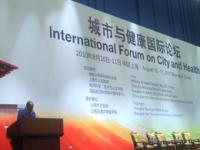
UNAIDS Executive Director, Mr Michel Sidibé, delivers a keynote speech on "HIV in Cities of the 21st Century” at the International Forum on Cities and Health, 9 August 2010, Shanghai, China Credit: UNAIDS
Efforts by the city of Bangkok to reduce HIV prevalence among sex workers provide one such success story. In collaboration with health providers, the police, entertainment industry owners, non-governmental organizations and sex workers, authorities in Bangkok launched a city-wide campaign in the early 1990s promoting 100% condom use. Over the course of 20 years, HIV prevalence among the city’s brothel-based sex workers has fallen significantly.
While in Shanghai, Mr Sidibé commended Chinese leaders on the country’s progress in scaling up methadone maintenance treatment and needle exchange programmes in large cities, which have been critical in reversing the HIV epidemic among injecting drug users. “I encourage China to continue to expand these programmes—particularly at the community level—and to reconsider whether drug detention centres are really effective as part of a national strategy to prevent HIV transmission,” he said.
Other cities facing burgeoning HIV epidemics among injecting drug users, such as Sydney, Toronto and Geneva, have implemented cost-effective harm reduction programmes, including needle exchange and opiate substitution therapy, stemming the tide of new HIV infections.
Mr Sidibé challenged China’s cities to be at the forefront of localized AIDS responses that address, in particular, the needs of populations at higher risk of HIV infection, such as men who have sex with men, migrant workers, sex workers and injecting drug users. He called on Shanghai to build on the momentum of Expo 2010, uniting and mobilizing mega-cities of the world to become HIV-free by 2015.
Right Hand Content
Speeches:
Keynote speech by UNAIDS Executive Director, Mr Michel Sidibé at the International Forum on Cities and Health, 10 August 2010, Shanghai, China(en | ch)
Multimedia:
View photo gallery of UNAIDS Executive Director official visit to China, August 2010
Related

Feature Story
Geneva celebrates positive living on World AIDS Day
01 December 2009
01 December 2009 01 December 2009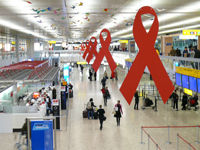
If you are one of the many travellers landing in Geneva airport this week, you will surely notice the gigantic red ribbons at the arrival and departure levels of a city that has chosen to join forces with UNAIDS and the myriad civil society organizations to draw attention to Human Rights and World AIDS Day.
A home for many international organizations, the City of Geneva is an example in its response to HIV in the community. With a rate of almost one person in a hundred living with HIV, Geneva is one of the cities most impacted by the epidemic in Switzerland. The epidemic is mainly driven by injecting drug use and same-sex sex. However, the many HIV prevention programmes in place are showing results: last year not a single new case of HIV infection due to injecting drug use was diagnosed.
Faithfull to its commitment to proactively respond to the epidemic and address the needs of those affected by it, the city, including many private sector companies, responded favourably to the call to collectively mark World AIDS Day.
I am delighted to see so many people from the International and local community coming together to show solidarity and mark this World AIDS Day and I am honoured to mark this day with you.
Jan Beagle, UNAIDS Deputy Executive Director. Management and External Relations
“We think that AIDS is an important issue for the people of Geneva and we are very happy to join with the United Nations and civil society to show our commitment to address the needs of people living with HIV, but also to sensitize the public about an epidemic that is affecting millions of people around the world,” says Rémy Pagani, Mayor of the City of Geneva.
Geneva activities are led by a World AIDS Day Committee bringing together UN staff and members of international and local organizations such as Groupe sida Genève. They were driven by the desire to share their commitment to the cause of HIV and pulled together their creativity and phone books to mobilize as many people as possible around World AIDS day.
The community came together to form a spectacular human red ribbon made up of approximately 200 people from the UN, international and local networks working on AIDS.
As a result, not only is the Airport of Geneva involved, but also red ribbons with a plaque explaining the symbol of the ribbon were placed by five key monuments around Lake Leman. World AIDS Day posters depicting human rights messages can be seen on local trams and the local hotels offered to place red ribbons and a programme of events at their reception desks.
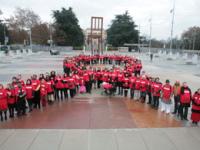
The Ville de Genève has been a strong partner throughout, illuminating the St Pierre Cathedral and the Phare des Paquis. Local media were also very responsive, giving coverage of World AIDS Day with interviews of local and international community members to illustrate both the reality of living with HIV in Geneva and how the local authorities are responding.
A solidarity lunch was organized in the UNAIDS Secretariat Headquarters to raise funds for children affected by HIV in Cameroon. While Groupe sida Genève took the lead in organizing evening commemorative events around town to remember the friends and family lost to AIDS, but also to celebrate positive living towards a world free from stigma and discrimination.


